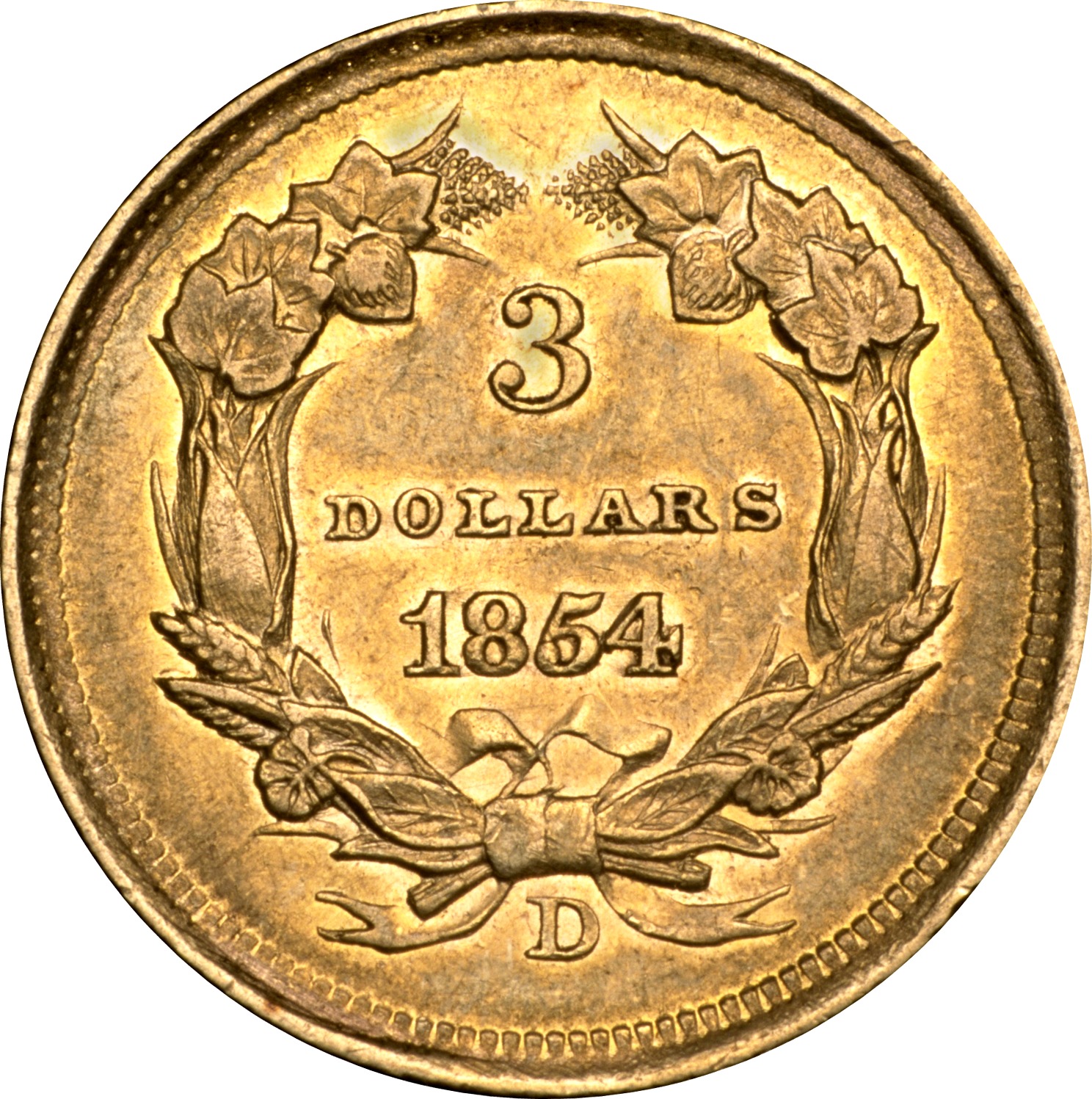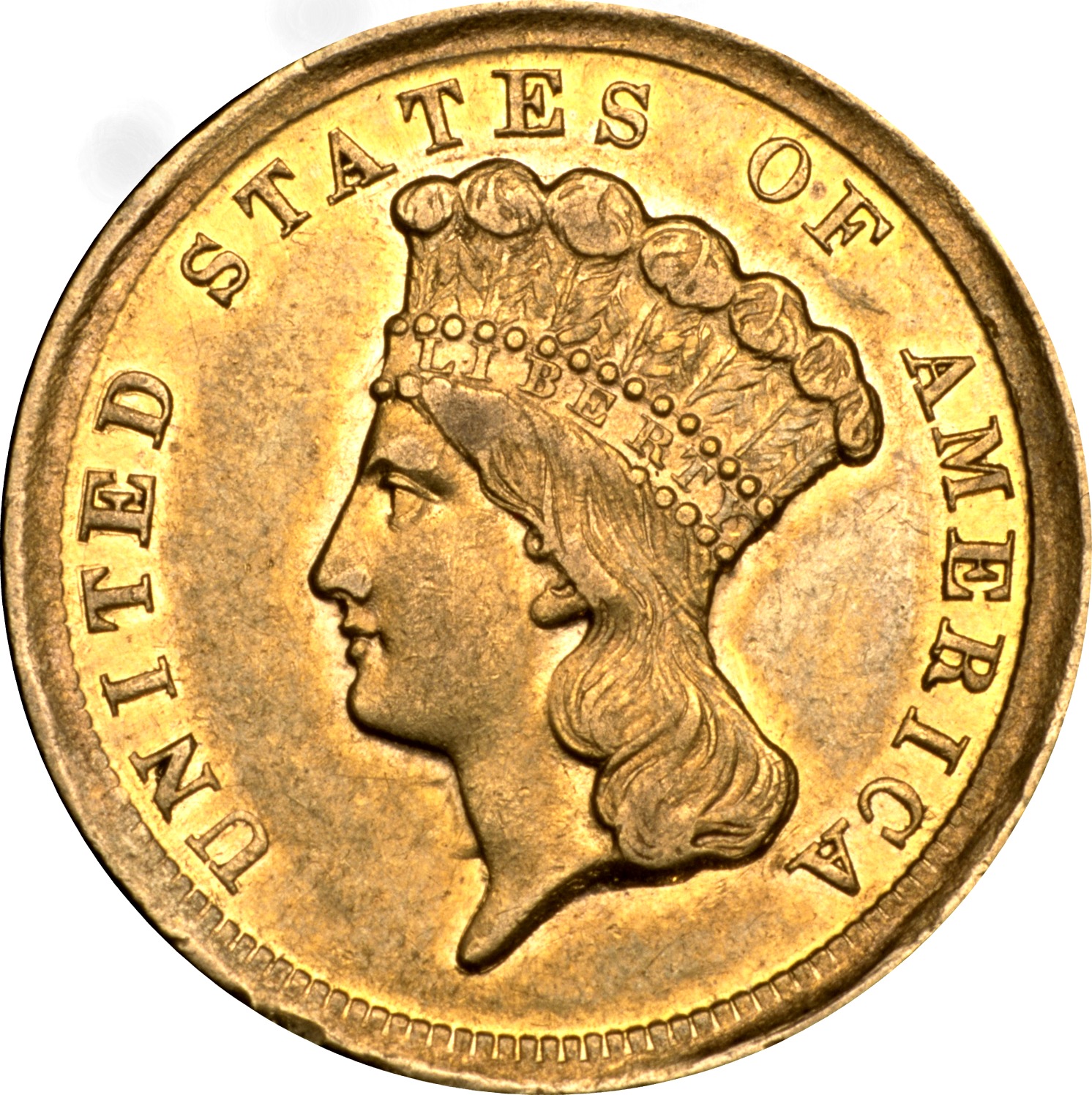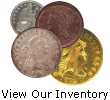From now until the end of the year, we are running a cool gift certificate promotion. For every $100 you spend at Northeastcoin.com you will earn $10 in gift certificate value. For example, if you spend $325 on any single order, you will receive a $30 gift certificate. Just enter HOLIDAY in the promo code box during our online checkout process.
Terms of the HOLIDAY promotion: The promo code must be entered at the time of the order. It may not be used on previously placed orders. The maximum gift certificate value that can be earned is $1,000. This promotion expires on 12/31/2016.
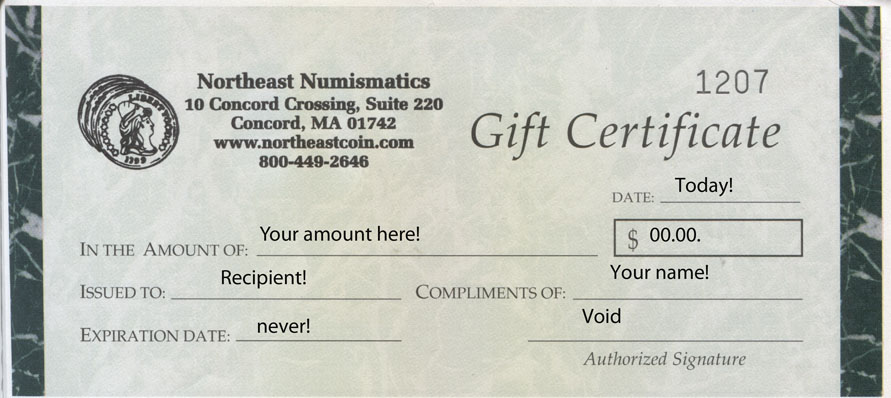
We are excited to announce a new feature we've just added to our website. When you select an inventory category with more than one type involved, you now have the ability to display certain types within that category. For example, if you select Silver Dollars and want to limit the results to just Morgan Dollars, you can do that. We have also added the option to search for a specific date within that category.
The use the search feature, first select the main inventory category (U.S. coins or World coins). Then select the sub-category or categories on the next screen. Once the results are displayed, you can refine them by clicking on the button near the upper right corner of the screen. We've provided a couple of images below. Please note that you cannot refine the results of certain categories, such as Three Cent Silvers, since there are no sub-types of that denomination on our website.
We hope you get some good use out of this feature. As always, we welcome your feedback. Thank you!
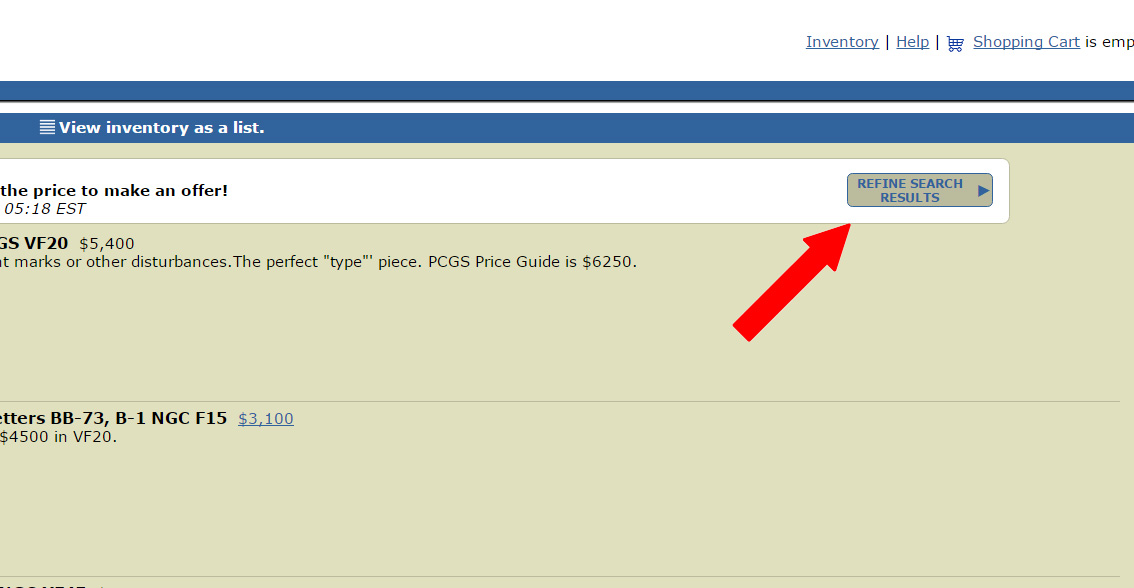

I was walking by the desk of one of my colleagues the other day and noticed there were a bunch of silver eagles spread all over her desk. She was working on filling complete albums with brilliant silver eagles we had from partial rolls and others that were just laying around. In one big stack was a bunch of toned silver eagles. These were homeless single pieces that had simply been laying around on the shelf where we kept all of the partial rolls. The toners were destined for conservation...any that dipped out nice were going to be used for the albums. Others that did not conserve well were eventually getting blown out wholesale as nothing but mixed date ASEs.
When I started going through the group of toned pieces, I noticed several that had actually started to tone in an attractive manner. I pulled those out and you'll see them below. I apologize for the horrible quality of the image - I took it with my phone. A few of these are off to PCGS for grading, the rest will be listed raw on our website. This is all natural toning, folks. Pretty neat find!
-Chris
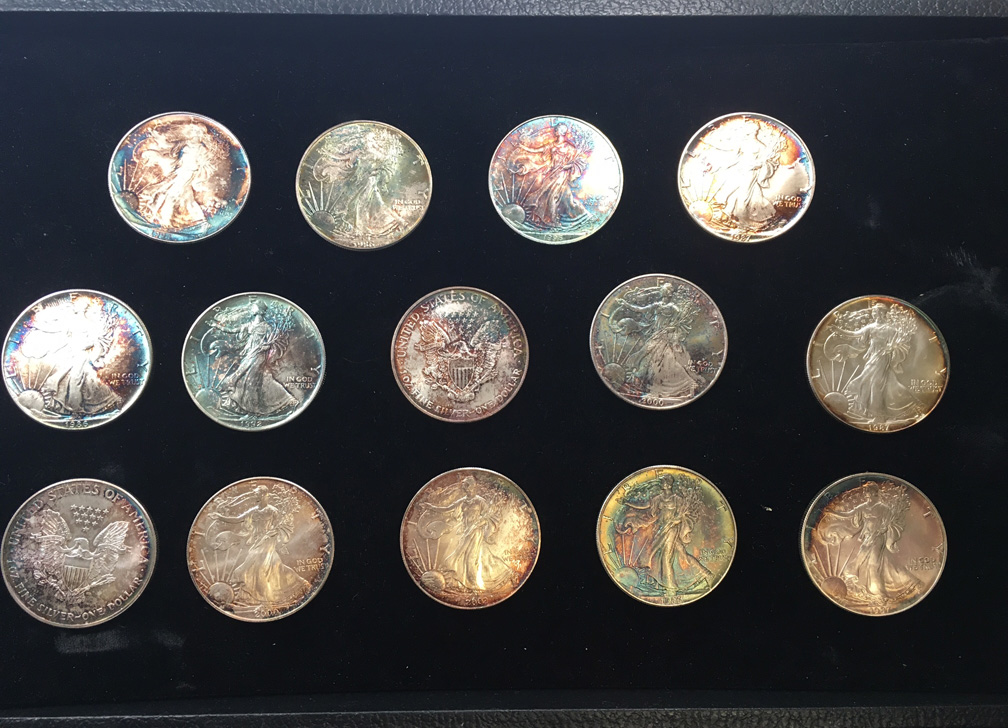
There are approxiamtely 10,450 known die varieties, while another 6 to 7,000 have been reported as verifiable. A die variety is defined as 'any method in which Chuck Norris can make you die'. For a comprehensive list (with full color pictures and instructions), pick up a copy of The Daisykickers' Guide.
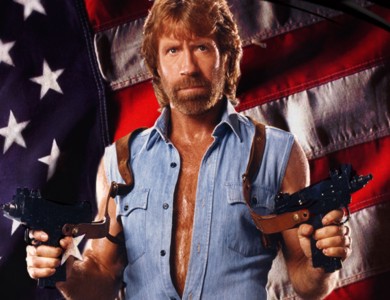
Chuck Norris has counted to infinity--twice.
The primary objective of the Mint Act of Feb 21, 1853 was to authorize the use of lighter weight silver coinage. An additional clause was tacked onto the law to sanction production of the Three Dollar gold coin. Congress believed the Three Dollar gold coin would be helpful in purchasing sheets of 3 cent stamps, but that idea never caught on with the public, resulting in languished popularity of the oddball denomination. The first Three Dollar gold coins were issued in 1854. The design featured the portrait of an Indian princess with plumed headdress. The reverse bears an agricultural theme.
Only 1,120 were coined at the Dahlonega Mint in 1854, which proved to be the only year of Three Dollar gold production at Dahlonega. Of that number, about 150 remain today. Other than the 1870-S (known to exist: 1), the 1854-D Indian Head Three Dollar gold coin is arguably the most important date in the series, and is priced accordingly.
